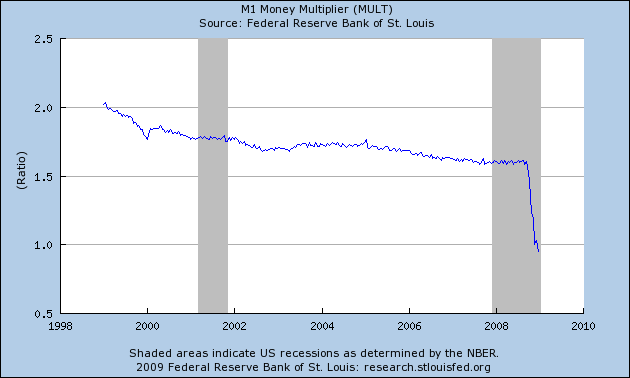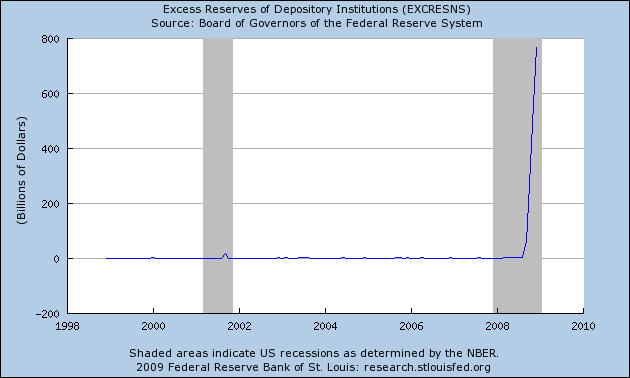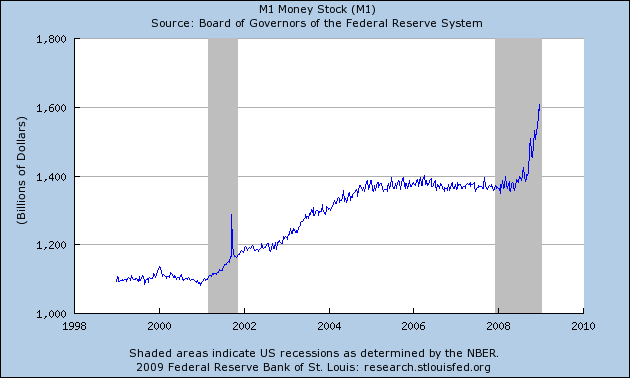Continuing on from my previous post on this topic, Paul Krugman has been voicing similar concerns (and far more eloquently). Although his focus has been on the idea of a bad bank (to which all the regular banks would sell their CDOs and other now-questionable assets), the problems are the same. On the 17th of January he wrote:
It comes back to the original questions about the TARP. Financial institutions that want to “get bad assets off their balance sheets” can do that any time they like, by writing those assets down to zero — or by selling them at whatever price they can. If we create a new institution to take over those assets, the $700 billion question is, at what price? And I still haven’t seen anything that explains how the price will be determined.
I suspect, though I’m not certain, that policymakers are once more coming around to the view that mortgage-backed securities are being systematically underpriced. But do we really know this? And how are we going to ensure that this doesn’t end up being a huge giveaway to financial firms?
On the 18th of January, he followed this up with:
What people are thinking about, it’s pretty clear, is the Resolution Trust Corporation, which cleaned up the savings and loan mess. That’s a good role model, as far as it goes. But the creation of the RTC did not rescue the S&Ls. The S&Ls were rescued by (1) having FSLIC seize them, cleaning out the stockholders (2) having FSLIC pay down enough debt to make them viable (3) reselling them to new investors. The RTC’s takeover of the bad assets was just a way for taxpayers to reclaim some of the cost of recapitalizing the banks.
What’s being contemplated now, if Sheila Bair’s interview is any indication, is the creation of an RTC-like entity without the rest of the process. The “bad bank” will pay “fair value”, whatever that is, for the assets. But how does that help the situation?
It looks as if we’re back to the idea that toxic waste is really, truly worth much more than anyone is willing to pay for it — and that if only we get the price “right”, the banks will turn out to be solvent after all. In other words, we’re still in Super-SIV territory, the belief that fancy financial engineering can create value out of nothing.
Tyler Cowen points us to this article in the Washington Post that describes the issues pretty well. Again, the crux of the matter is:
The difficulty is that banks think their assets are worth more than investors are willing to pay. If the government sides with investors, the banks will be forced to swallow the difference as a loss. If the government pays what the banks regard as a fair price, however, the markets may ignore the transactions as a bailout by another name.
Tyler Cowen’s own comment:
If the assets are undervalued by the market, buying them up is an OK deal. Presumably the price would be determined by a reverse auction, with hard-to-track asset heterogeneity introducing some arbitrariness into the resulting prices. If these assets are not undervalued by the market, and indeed they really are worth so little, our government wishes to find a not-fully-transparent way to give financial firms greater value, also known as “huge giveaway.”
Right now it seems to boil down to the original TARP idea or nationalization, take your pick. You are more likely to favor nationalization if you think that governments can run things well, if you feel there is justice in government having “upside” on the deal, and if you are keen to spend the TARP money on other programs instead.



